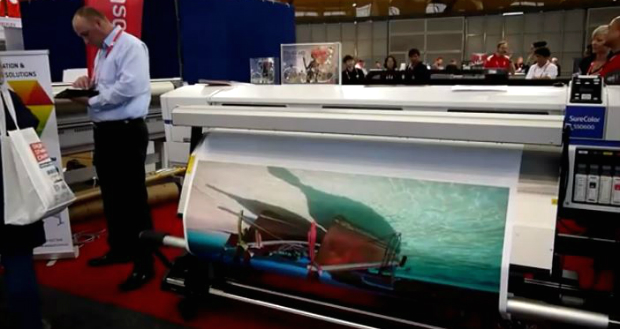The machines, which vary in size and speed according to finishing needs, can minimise costs without compromising the value and quality of the end result.
GBC manager Raj Dang says bringing finishing in house also proves to be more efficient through greater control of processes, quality and materials, speed of turnaround and in turn greater cost savings and customer satisfaction.
“Thermal lamination has made it easy for printers to convey finishing in-house,” explains Dang. “Advanced thermal laminators permit high speeds, easy operation with no mess and lower initial investment costs than in the past, it’s now less complicated to expand your product offering to high quality thermal lamination.”
He says there are many advantages of thermal lamination compared to other coating methods. Unlike wet lamination, thermal lamination requires no adhesive to be sprayed onto the film, is less labour intensive and the adhesive is much more aggressive. This method does not cause skin irritation or require ventilation systems like other methods.
Thermal lamination also protects stock against scratching and scuffing, involves no curing time and strengthens paper stock.
“With its high luster and luxurious feel, a laminated product communicates quality and adds significantly to the product’s value,” says Dang.
Two one-sided laminators in GBC’s range are The Voyager and The Delta.
The Voyager comes complete with an integrated feeder and separator. It is designed to easily run a variety of high-speed commercial thermal films and offers versatility, productivity and value for money.
“The GBC Voyager can be considered as the ideal solution for medium and high volumes of printed materials running at speeds of up to 50 metres per minute,” says Dang.
The Delta is ideal for jobs where volumes are smaller and production turn-around needs to be more flexible, as it has the ability to change stock, size and film quickly. It is a compact, fully integrated machine with a built-in feeder and separator.
“The Delta’s compact design, speed of 20 metres per minute and ease of operation make it the ideal machine to start in-house lamination and add flexibility to existing lamination facilities,” says Dang.
This month GBC is also introducing the new environmentally friendly and biodegradable 8800 Diamond Acetate Film. Its substrate is derived from wood pulp and is therefore entirely recyclable.
GBC recommends Diamond film for consumer and cosmetic packaging, creative applications and window packaging.
Available in gloss and matt, the 8800 Diamond achieves excellent scuff resistance and creasing characteristics and delivers enhanced performance over solvent and water-based lamination film. It has foil stamping and embossing features and is amenable to glue and creasing without any detrimental effect to quality and presentation.
”The ‘green’ characteristics of 8800 Diamond are an additional benefit,” says Dang. “Less wastage and a solvent-free production process all contribute to a cleaner environment. The base material is a cellulose diacetate film derived from natural cellulose sources, cotton linters and wood pulp, from managed forests with replanting programmes. No hardwoods from endangered forests.”
Comment below to have your say on this story.
If you have a news story or tip-off, get in touch at editorial@sprinter.com.au.
Sign up to the Sprinter newsletter

